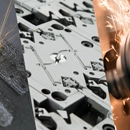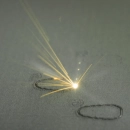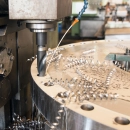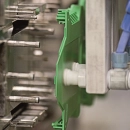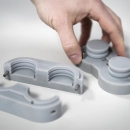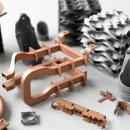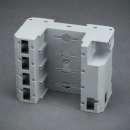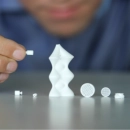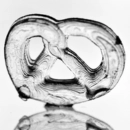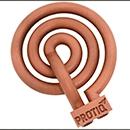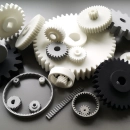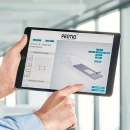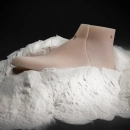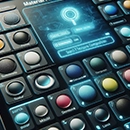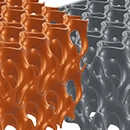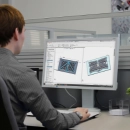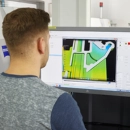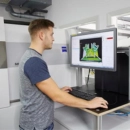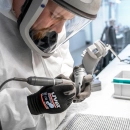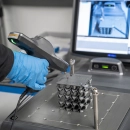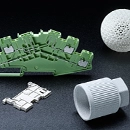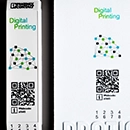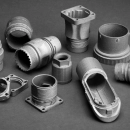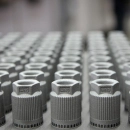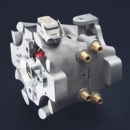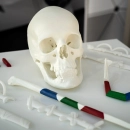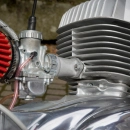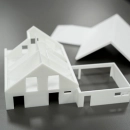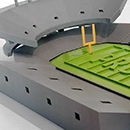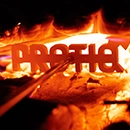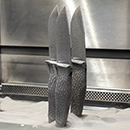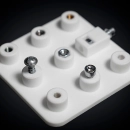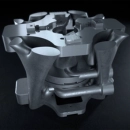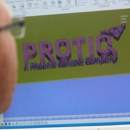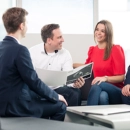Chemical smoothing of plastic components from 3D printing
Vapor Smoothing: for surfaces similar to injection molding
Smoother surfaces in 3D printing
Chemical smoothing, also known as vapor smoothing, is a process for surface finishing of additively manufactured plastic components. The aim is to create a smooth, compacted and sealed surface that is not only visually appealing, but also offers functional benefits.
The process is based on the controlled effect of solvent vapors, which briefly dissolve the layer of plastic near the surface. This physical-chemical process causes the surface structures to soften slightly, resulting in the rearrangement of micro-roughnesses and irregular structures. The surface levels out, becomes more homogeneous and has a uniform feel. This means that even complex geometries can be completely smoothed without changing the shape of the component.
In addition to the improved cosmetic appearance, the components also benefit from functional properties: The reduced porosity makes them less susceptible to the penetration of liquids or dirt, facilitates cleaning and increases resistance to moisture and chemicals. Vapor Smoothing therefore not only contributes to higher component quality, but also opens up new possibilities for use in demanding industrial applications.
Which materials are particularly suitable for vapor smoothing?
Polyamides such as PA 11 and PA 12 are particularly suitable as their surfaces can be reliably dissolved and evenly smoothed. Flexible plastics such as TPU can also be refined by vapor smoothing and thus gain in density and feel. However, high-performance plastics with high chemical resistance are less suitable, as they hardly react to solvent vapors. The right combination of material and solvent is therefore crucial for the success of the process in order to achieve a homogeneous, closed surface without impairing the component geometry.
These 3D printing processes particularly benefit from chemical smoothing
Components manufactured using the powder bed process are particularly suitable for vapor smoothing. These primarily include selective laser sintering (SLS) and multi-jet fusion (MJF). Both processes produce components with a slightly rough and porous surface that can be reliably compacted and homogenized by chemical smoothing.
The process is less relevant for technologies such as SLA or DLP, as very smooth surfaces are already created during printing. Vapor smoothing is not used for metal or ceramic components, as these materials do not react to solvent vapours.
Areas of application for chemical smoothing
1. Improved mechanical properties
The compaction of the surface structure through chemical smoothing has a positive effect on the mechanical performance of the component surface. A smooth and uniform surface reduces notch effects and can therefore increase resistance to mechanical influences. This opens up additional application possibilities in areas where resilience and durability are required.
2. Optimized hygiene and easy cleaning
By reducing porosity and roughness, smoothed components are less susceptible to the adhesion of particles or microorganisms. The surfaces are easier to clean and disinfect, which makes them particularly interesting for applications where hygiene and regular cleaning play an important role.
3. Efficient fluid and gas routing
A smoothed inner and outer surface improves the flow properties and reduces turbulence in fluid or gas-carrying components. The sealed surface can also reduce the risk of leaks and therefore contributes to functional reliability in hydraulic or pneumatic systems.
4. High-quality visible and design components
Vapor Smoothing eliminates visible layer lines and roughness, giving components a uniform, professional and high-quality appearance. The process is therefore particularly suitable for consumer goods and other applications where appearance plays a decisive role.
Why vapor smoothing? The most important advantages
Technical advantages:
- Compacted and sealed surface structure
- Reduced porosity and improved density
- Easier cleaning due to closed surfaces
- Reduced adhesion of particles and liquids
Visual and haptic advantages:
- Uniform, smooth surfaces without visible layer lines
- High-quality appearance for visible or design-relevant components
- Pleasant feel thanks to smooth surfaces
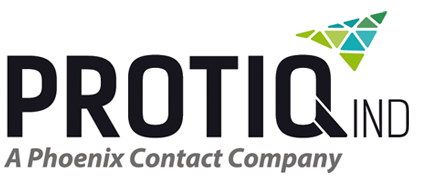


 Deutsch
Deutsch English
English Italiano
Italiano